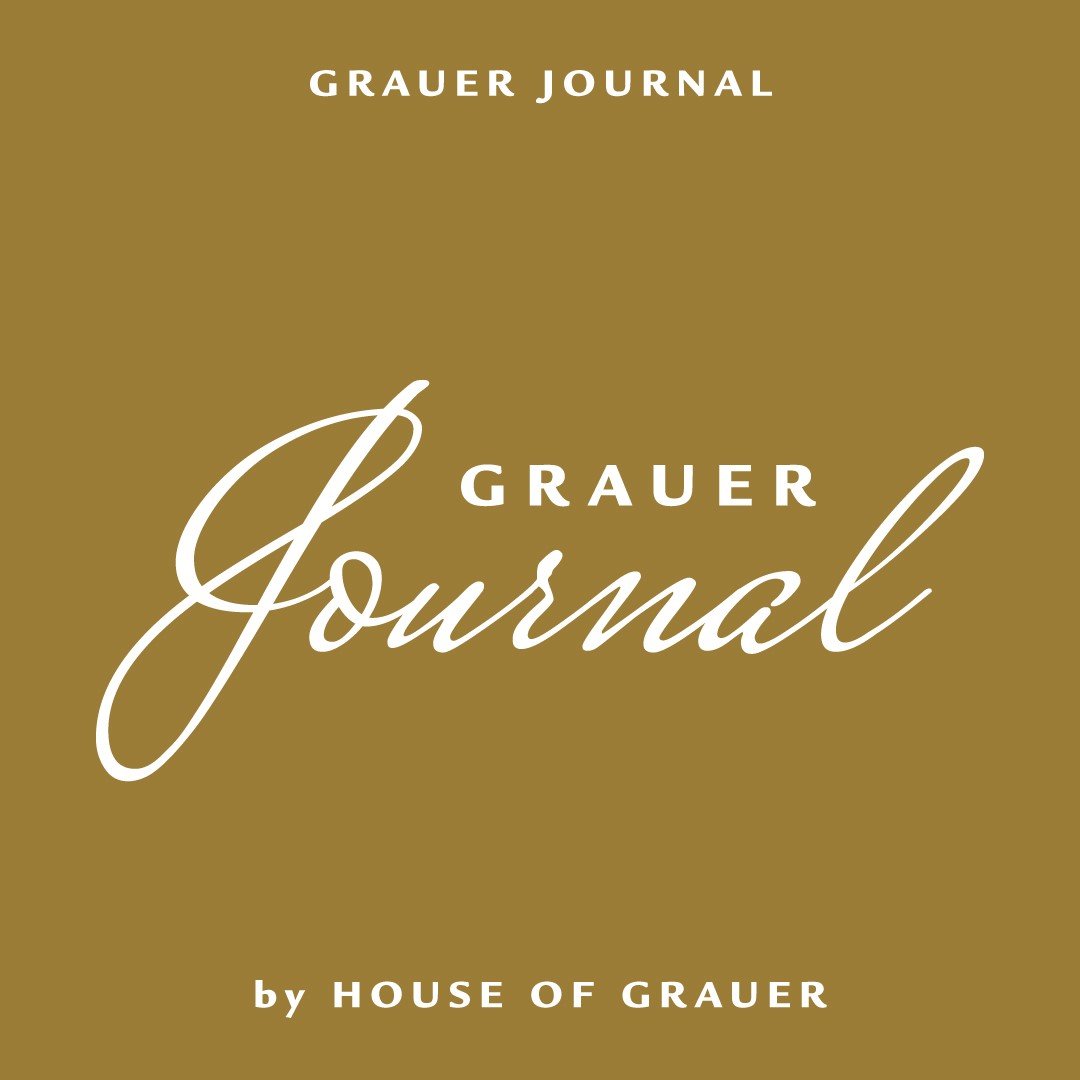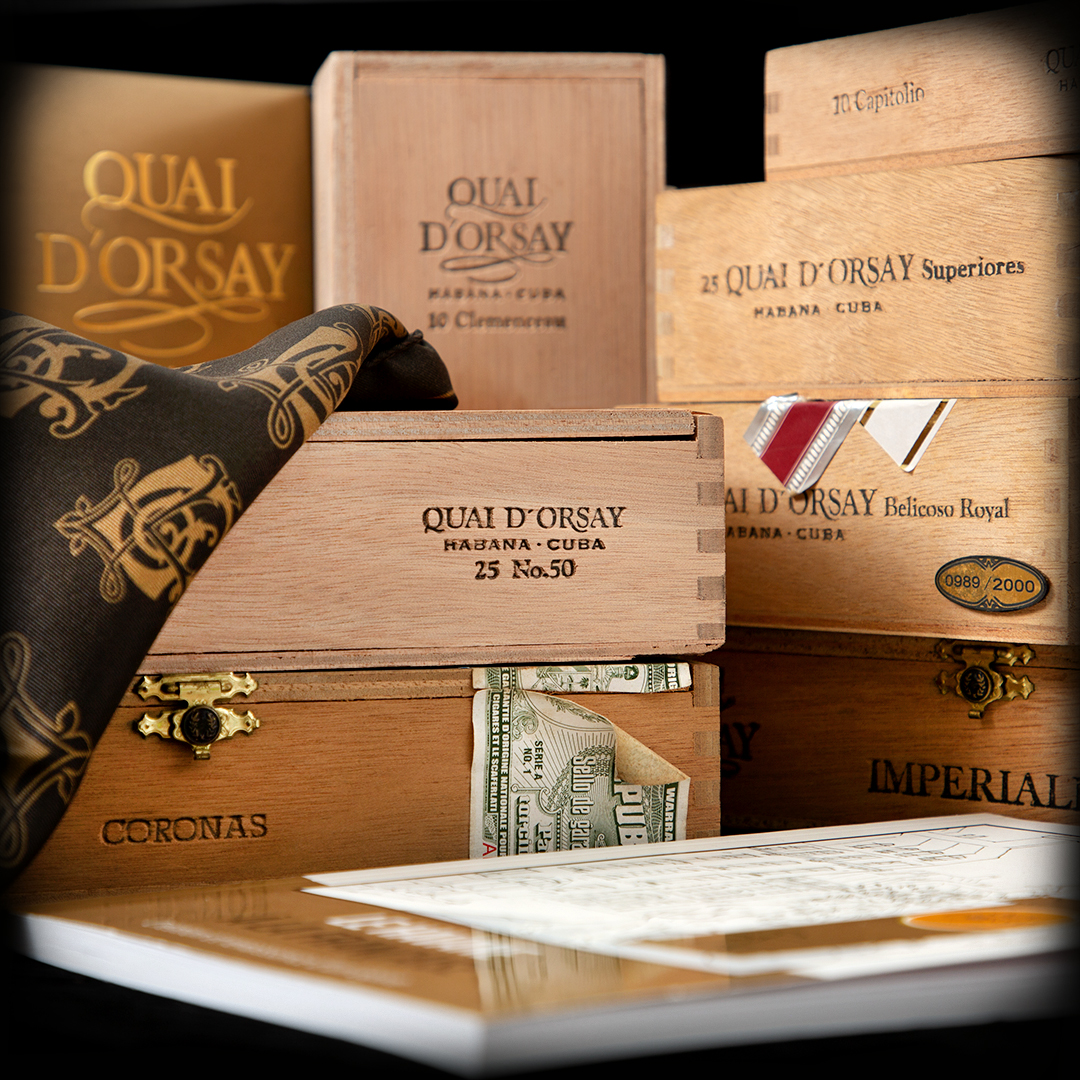Quai d’Orsay
The story of a mysterious French brand of Cuban cigars.
Before becoming one of the most noteable and sought-after brands in the Habanos catalogue, Quai d'Orsay was never intended to open up to the world. Let's look back to the history of this mysterious French brand of Cuban cigars.
The beginnings of the Quai d'Orsay brand were born in the early 1970s under the impetus of Valéry Giscard d'Estaing. The latter, then Minister of Finance and Economic Affairs, approached the general manager of Seita (Service d'exploitation industrielle des tabacs et allumettes) and asked him to create a cigar that would help the French diplomats to promote the country’s prestige. According to him, "France shines worldwide with its perfumes, champagnes, foie gras and haute couture, but there was no representation of the tobacco industry”.*
Aware of the Cuban craftsman ship in cigar rolling and the quality of the island's tobacco leaves, Gilbert Belaubre, Seita's commercial director, decided to turn to Cuba to carry out this project.
When it came about to choose a name for this new high-end cigar brand evoking France, the choice was quite obvious. As both, the Seita headquarters and the Ministry of Foreign Affairs, which were nicknamed "the Quai d'Orsay", were located on the famous quay on the left bank of the Seine in the 7ᵉ arrondissement of Paris, the name Quai d'Orsay quickly became very indisputable.
In February 1972, the brand was officially registered with the INPI (National Institute for Intellectual Protection) as: "Manufactured tobacco in all its forms, matches and smokers' articles".
This registration will mark the starting point of the negotiations between Franc and Cuba. The creation of a new cigar brand at the request of a country was a first in the history of Cuban cigars.
During these negotiations, Seita negotiated exclusivity for the vitolas that would be marketed in France under the Quai d'Orsay brand. The other part of the discussions were in regards to the cigar itself: that only top quality tobacco from the Vuelta Abajo would be used, that the cigars would be made according to the "Totalmente a Mano" tradition, and finally, that very special attention would be paid to the selection of the wrapper leaves, with a preference for the "claro" shade.
Following various exchanges of letters between the two nations, a first meeting took place in June 1972 in Paris. The agenda? The proposal of 12 modules made by Cubatabaco having the same blend.
In December 1972, a second meeting was held with the aim of validating the different vitolas presented a few months earlier. Two of them were selected: a Coronas (42 x 142 mm) which later on became the Quai d'Orsay Coronas Claro and a Ninfas (33 x 178 mm) which became the Quai d'Orsay Panetelas.
A year and a half of additional time for ongoin exchanges had been necessary in order to finally establish the full range of the brand's vitolario, composed by five cigars. In addition to the two previously mentioned, the Quai d'Orsay Imperiales (Julieta No.2 - 47 x 178 mm), the Quai d'Orsay Gran Corona (Coronas Grandes - 42 x 155 mm) and the Quai d'Orsay Coronas Claro Claro, a lighter-wrapper version of the Coronas Claro, were finally added to the range.
The contract between Seita and Cubatabaco was finally signed on 16 January 1974. Seita had exclusive distribution and sales rights for Quai d'Orsay cigars in mainland France, Corsica, Monaco, duty-free sales and diplomatic missions abroad, and possibly in other territories to be defined later. Cubatabaco for its part agrees not to use the brand for any customer other than Seita in exchange of ownership for the brand. Seita then officially transferred ownership of the brand on March 18, 1974, and a first order of 500,000 cigars was placed.
The brand was officially launched a few months later, in November 1974, in Paris in the famous Halles district restaurant Au Pied de Cochon. Celebrated with a gastronomic meal in the typical French style in perfect harmony with the famous cigar, a beautiful rendering to express this impeccable symbiosis.
As soon as they went on sale, Quai d'Orsay cigars quickly seduced the French aficionados until the 1990s, when the brand and, more importantly, Cuban cigars went through a difficult time due to a lack of supplies from Cuba, heavily influenced by an economic crisis and the American embargo.
In order to restore the situation, Seita, decided to send money to Cuba in order to finance their local tobacco producers who were short of material and cash. This loan would later on be reimbursed and accounted for by cigars. This approach was followed by Tabacalera, company that held the tobacco monopoly in Spain. The main European markets were then supplied again and quickly recovered from the crisis. However, it appears that the Quai d'Orsay brand has been deprived of its figurehead, the Imperiales, which are still unavailable. These difficult years also led to closer ties between the Spanish Tabacalera and the French Seita, leading them to merge in the late 1990s to form the Altadis group.
In the early 2000s, Quai d'Orsay was given a new impetus by Frank Coste, director of the cigar division at Altadis in France. Special care was given to the manufacturing of Quai d'Orsay cigars, which had fallen into disuse since the crisis of the 1990s. To mark this new beginning, a gala dinner for 300 guests was organized at the luxurious Hôtel de Crillon, Place de la Concorde in Paris. From then on, the brand's ambition was to regain its 1980s sales levels by winning back the hearts of aficionados who had gradually abandoned the brand over the previous two decades.
Despite all these efforts, Quai d'Orsay seems to still be struggling to win back their customers. This is probably due to the fact that the brand's vitolario no longer correspond to consumer expectations. Indeed, the brand only offers relatively long and thin vitolas while aficionados are looking for more short and thick vitolas. Nicknamed "Short Smokes", these cigars are increasingly appreciated and sought after by aficionados because they offer a more complex aromatic profile for a relatively short tasting time.
The brand will again fall into oblivion until 2011, when it joins the Regional Edition program, with its first cigar, the Quai d'Orsay Superiores Edición Regional Asia Pacifico, a Robustos (50 x 124 mm). It was an immediate success. The brand had never before been selected for a regional edition, a program launched in 2005, and the format chosen, the Robustos, was perfectly in line with the market trend.
Since then, Quai d'Orsay has recovered all its credentials and the various regional editions have followed one after the other: the Quai d'Orsay Robusto Embajador Edición Regional Francia 2011, a Mágicos (52 x 115 mm); the Quai d'Orsay Belicoso Royal Edición Regional Francia 2014, a Petit Belicosos (52 x 125 mm); the Quai d'Orsay Robusto Diplomatico Edición Regional Francia 2015, a Hermosos No.4 (48 x 127 mm); Quai d'Orsay Secreto Cubano Edición Regional Francia 2016, a Secretos (40 x 110 mm); Quai d'Orsay Capitolio Edición Regional Francia 2018, a Sublimes (54 x 164 mm); Quai d'Orsay Baalbeck Edición Regional Líbano 2018, a Duke (54 x 140 mm); the Quai d'Orsay Ambassadeur Edición Regional Andorra 2020, a Half Corona (44 x 90 mm); the Quai d'Orsay Sélection Royale Edición Regional Suiza 2020, a 109 (50 x 184 mm) that we are looking forward to showcasing you very soon and finally, the Quai d'Orsay Clemenceau Edición Regional Francia 2020, a Julieta No. 2 (47 x 178 mm) that we are presenting to you today.
To date, no less than 10 regional editions have been produced by the brand. Each of them, while remaining faithful to the elegance and aromatic bouquet of the Quai d'Orsay, has contributed to the international renown of the brand and strengthened its today’s credibility.
In 2017 during the XIX Festival del Habano was a fantastic opportunity for Habanos to present a new visual identity for the brand as well as two new vitolas in regular production: Quai d'Orsay No. 50 (50 x 110 mm) and Quai d'Orsay No. 54 (54 × 135 mm). The integration of these two new cigars allowed the brand to expand their catalogue by two modules with shorter and thicker formats so much sought after by aficionados.
The Coronas Claro, the oldest vitola of the brand is still in production, also largely benefited from the revival of Quai d'Orsay by getting a make over of the band. The new one has the original characteristical structure and geometric lines of the old one, but its size has been increased. In addition, new printing techniques were incorporated in various colors, reliefs and gold motifs, as well as the name of the vitola. The brand's origins have been given greater visibility and presence, with the "Habana" and "Cuba" stamps in the center and on the sides of the band.
Meanwhile the brand has also joined the prestigious Edición Limitada program with the 2019 release of the Quai d'Orsay Senadores Edición Limitada, a Hermosos No.2 (48 x 157 mm).
More than 40 years after its creation, the most French of Cuban cigar brands continues to attract the interest of aficionados around the world. A prestigious and refined brand, Quai d'Orsay has long remained confidential and is now opening up to new horizons for the greatest pleasure of cigar lovers.
To find out more about Quai d'Orsay cigars and its history, we would be delighted to welcoming you to our walk-in humidor, where you will find exclusive pieces, special productions, but also cigars from more regular production.
*Antoine Bathie, 2019; Quai d’Orsay, The Habano à la Française
Login to your online account to reserve your item
or contact us at +41 22 552 2799


